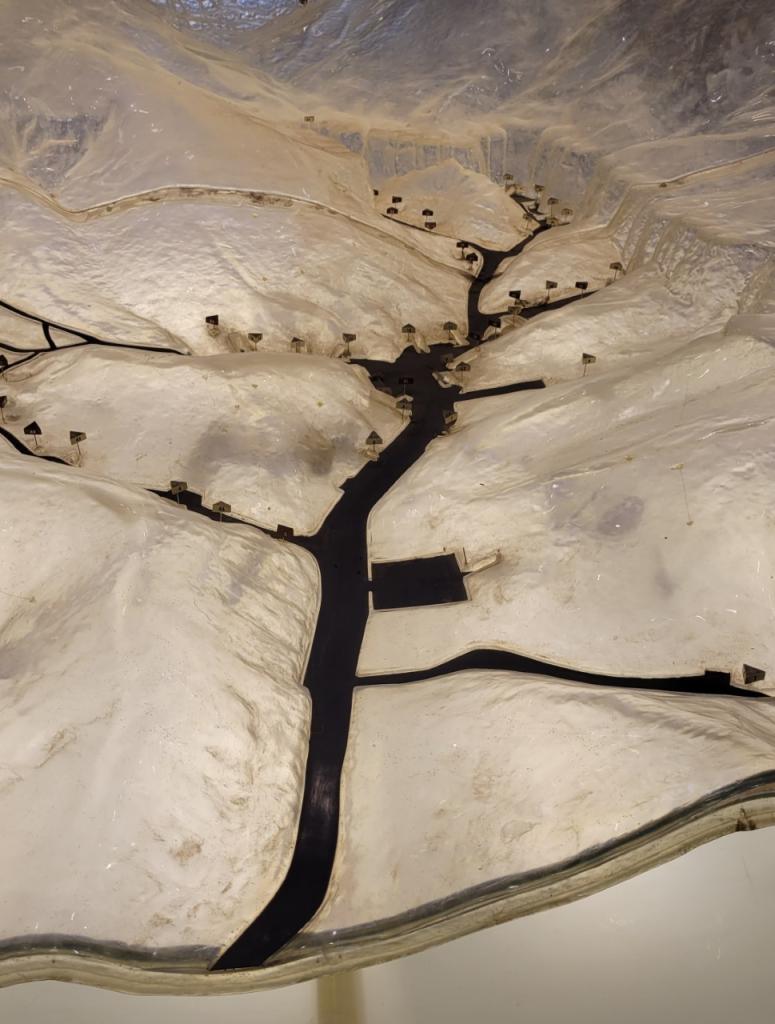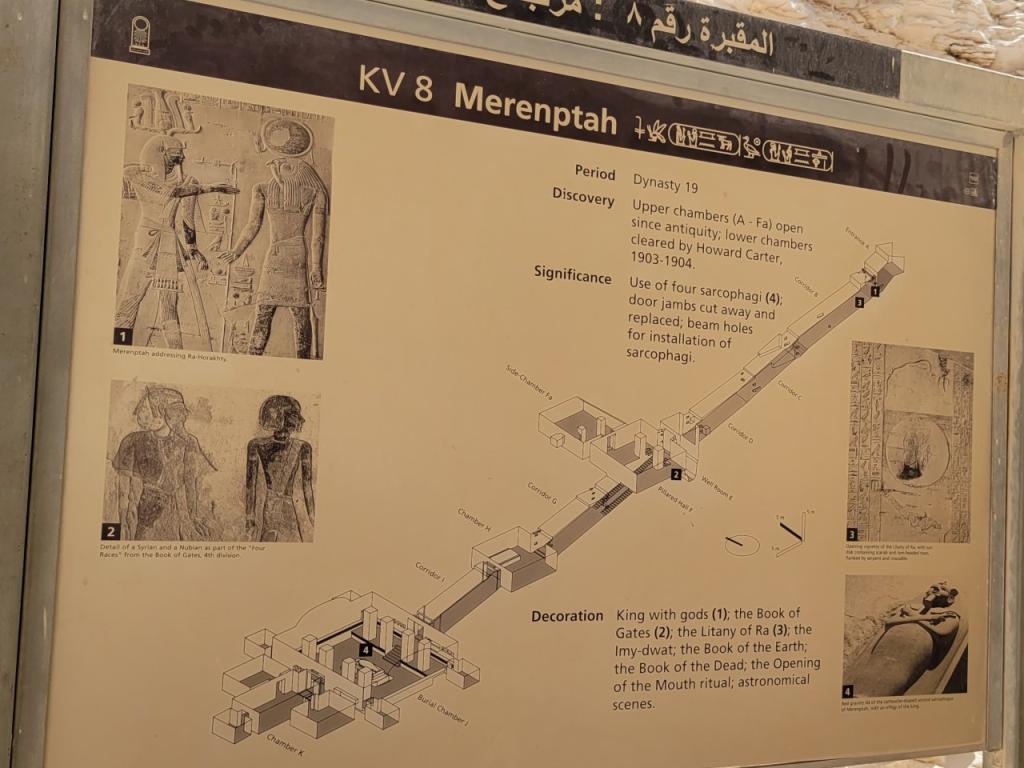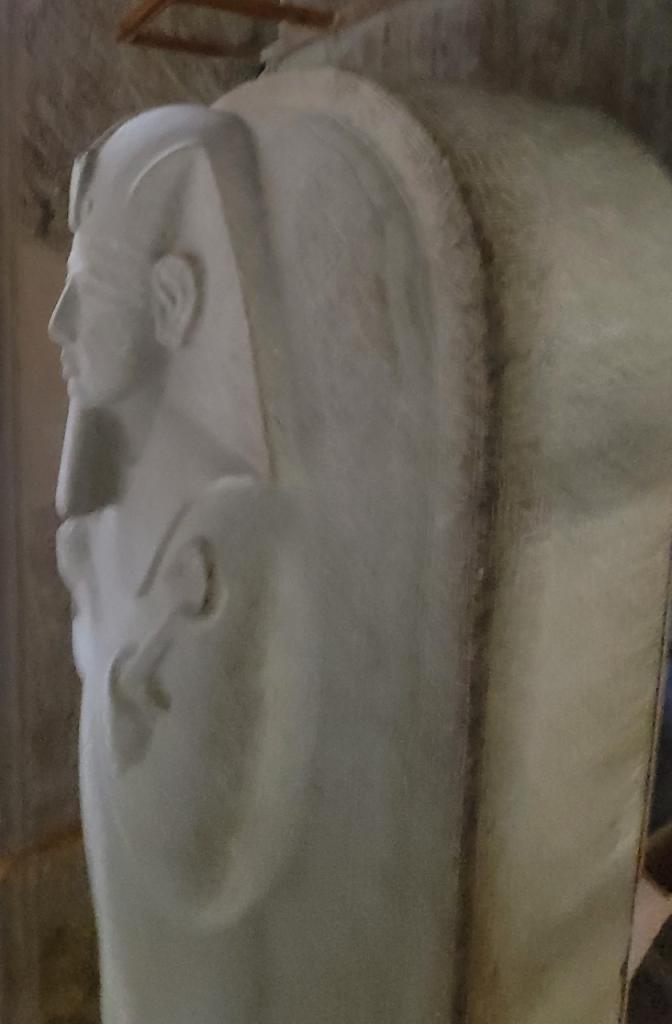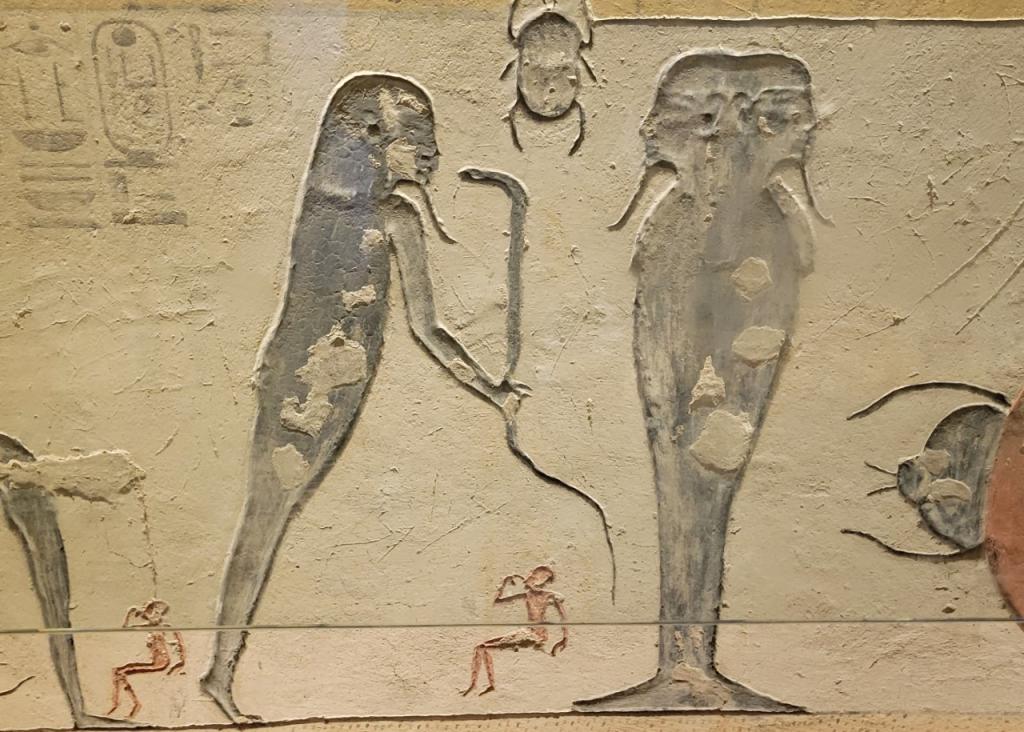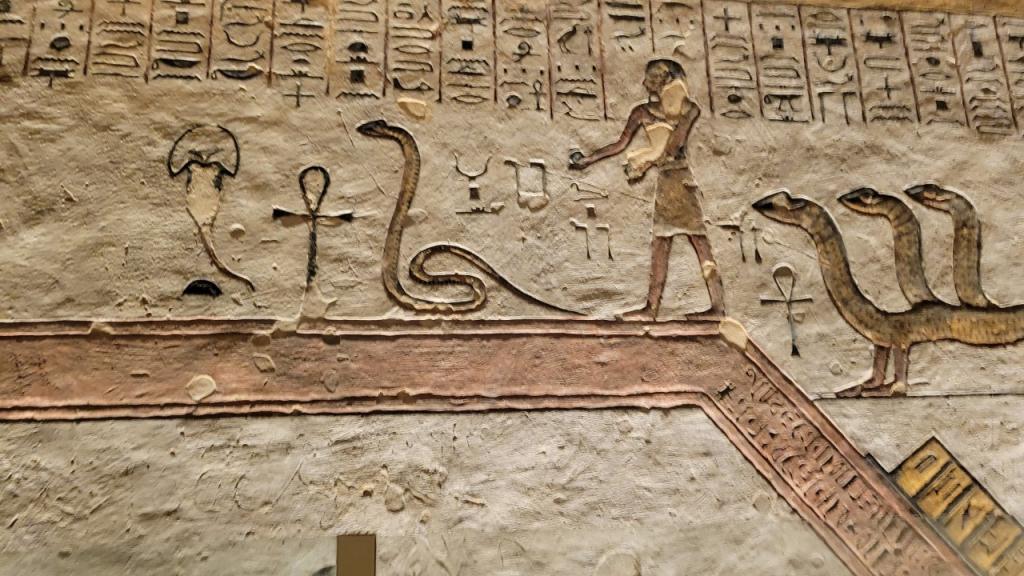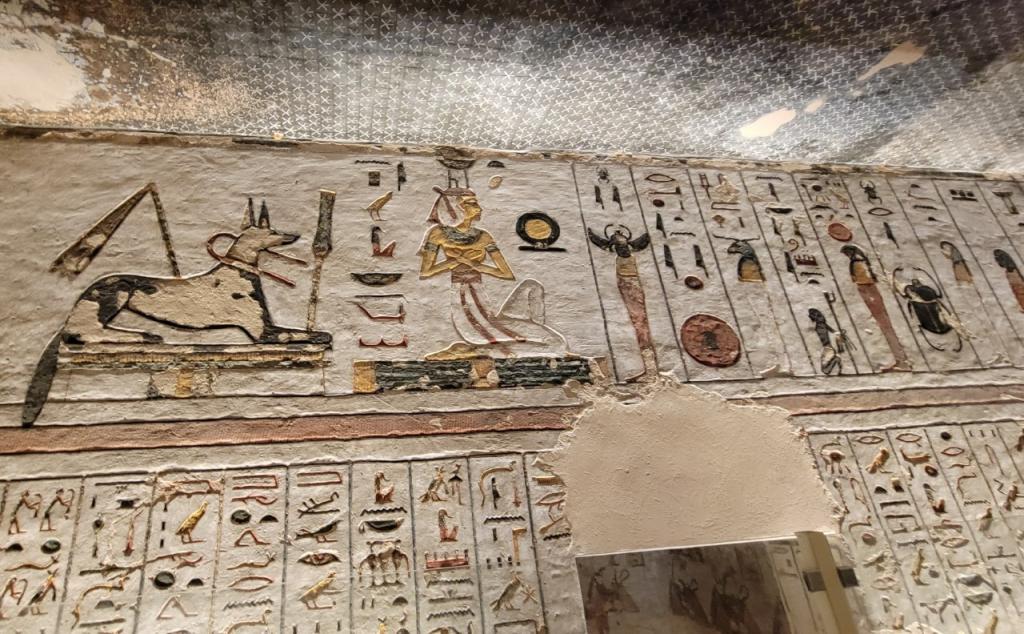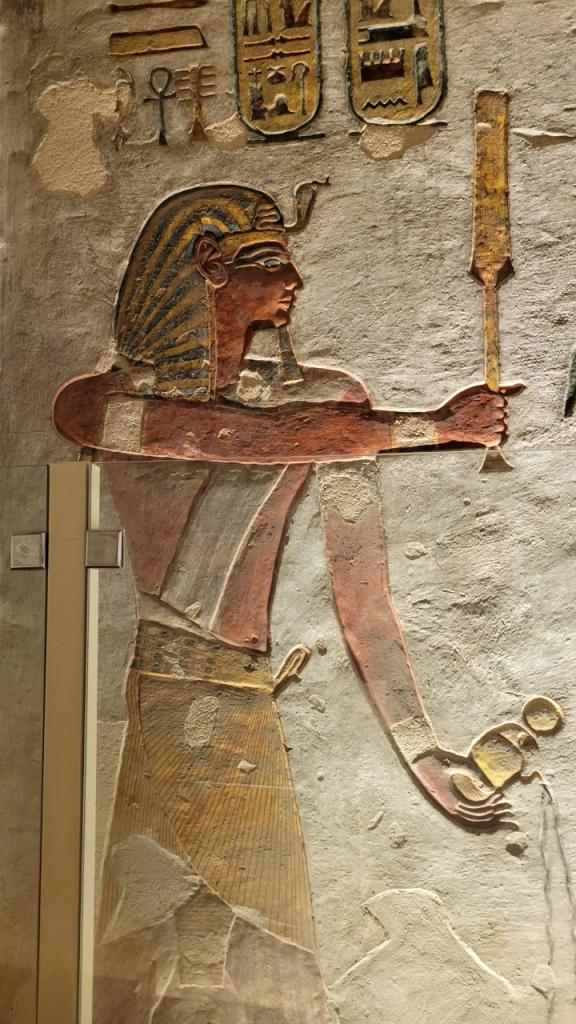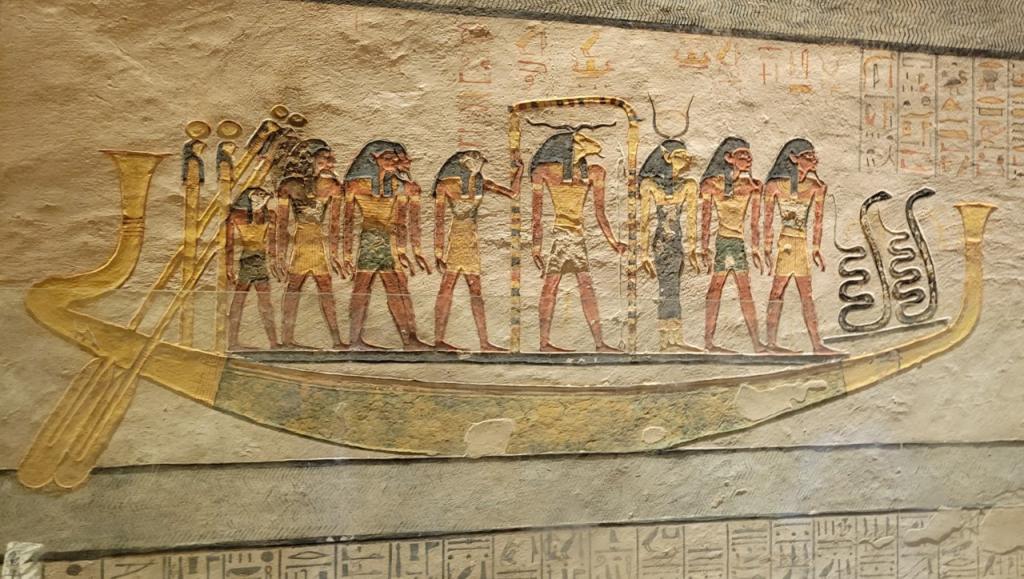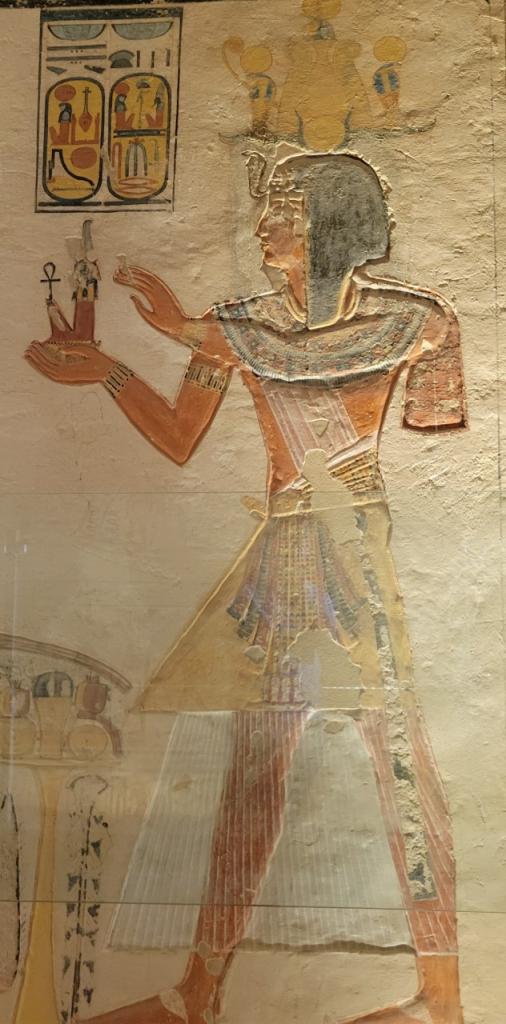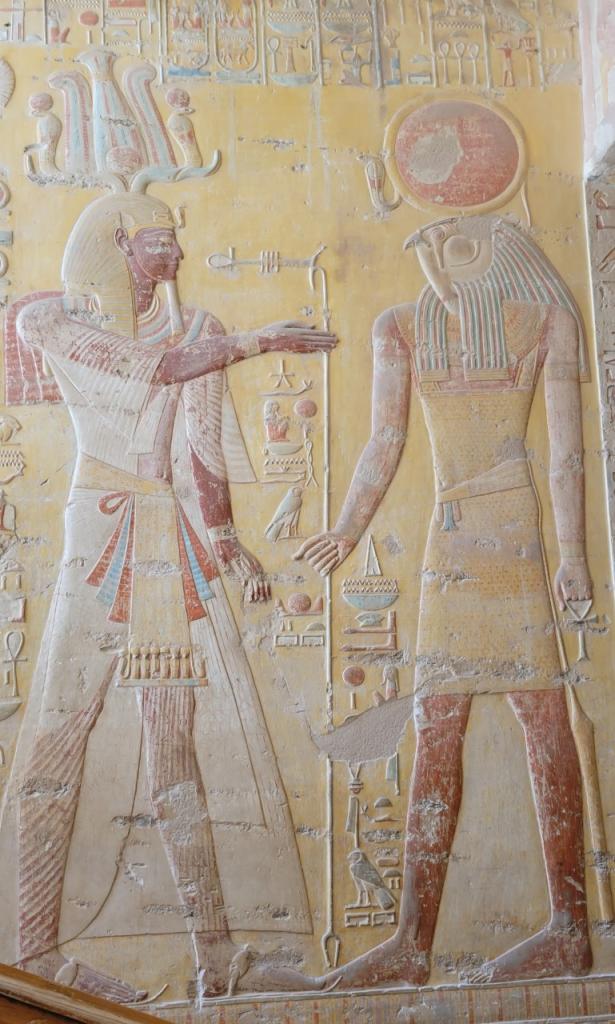This we visited three major tombs in the Valley of the Kings— first Merneptah’s tomb, then Ramses III, and Ramses VI. These are all spectacular tombs. Here is a schematic of the tombs in the. Valley of the Kings.
As I mentioned, Merneptah’s tomb is one of the deepest ones.
What grave robbers were looking for is not just the sarcophagus, but they knew there would be valuables in it, but also for the things a king was buried with. The reason we have so much from King Tut’s tomb is that it was not found by the grave robbers, and so everything put in their including chariots, food etc. was found in tact. This is not true of most of the tombs. There is even evidence that some grave robbers were so determined they brought hot oil with them, drilled a hole in the sarcophagus lit, poured in the oil which cracked the sarcophagus and they were then able to steal what contents they found. This is why in the pyramids themselves, which are tombs, and in the burials here you have false doors and deliberately misleading features. Here is a typical granite sarcophagus…
This actually is a replica of the top of Akhenaten’s sarcophagus. It would not be just the burial chamber that would be decorated but all the hallways leading to it as well. And you can tell when I tomb is unfinished, as the decoration stops once the man dies, even if they haven’t finished.
Sometimes these hieroglyphics are carved deep into the rock. Sometimes they are just painted on as below.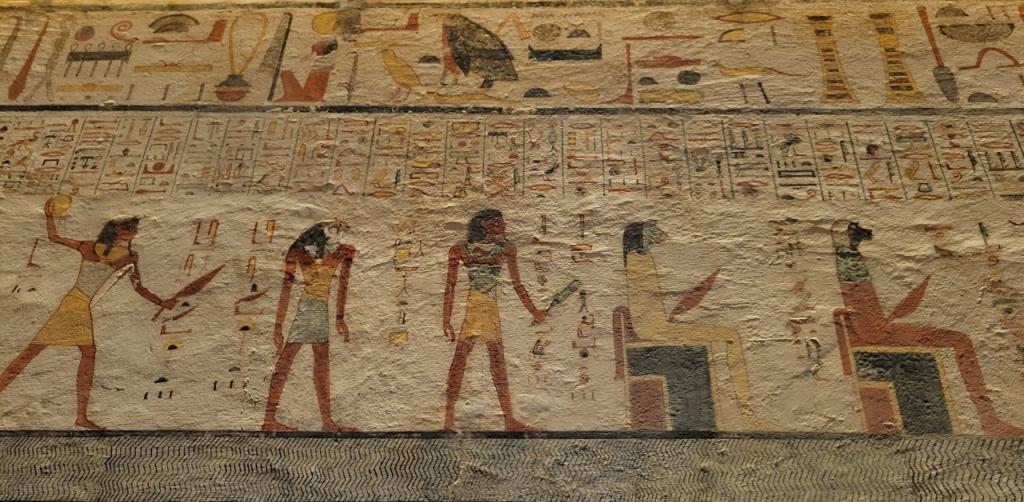
Notice how the ankhs are carved into the limestone (the ankh is the one that looks like a cross with a loop on the top).
Notice the stars in the ceiling. Basically these paintings tell the story of the journey to the afterlife, or the offerings of the Pharaoh to get into the afterlife, or the final judgment scene where his heart is weighed in the scales. The gods are represented as having animal heads— an ibis, a dog, an alligator, a beetle, a falcon, etc. Here the pharaoh is pouring out an oil offering and holding up a feather, which is the symbol that he has been telling the truth.
Here we see the journey to the afterlife on the bark across the Nile…
Notice the numerous gods, including Ra, the god with the falcon head, going with the deceased across the Nile.
In this somewhat deteriorated image we see the hieroglyphic symbol for water looking like a bunch of upside down v’s run together. 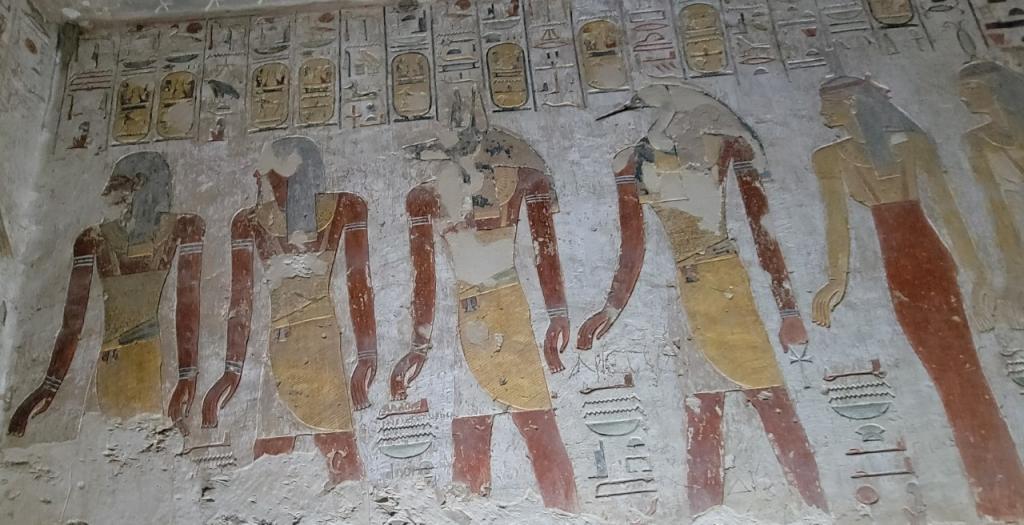
The Nile water, which was tidal, leaving rich silt on both shores, without which there could be no farming, no crops, no life. It is not a surprise that in this culture, crossing over the river, as in other later cultures, was a symbol of passing from this life to the afterlife.
Since the Rosetta stone which provides the key for translating hieroglyphics into an alphabetic language like Greek, we know what these symbols mean, and the most important of them are the cartouches, which provide the name of the given pharaoh in hieroglyphics. Notice the two cartouches in the upper portion of this painting.
This is from the tomb of one of Ramses.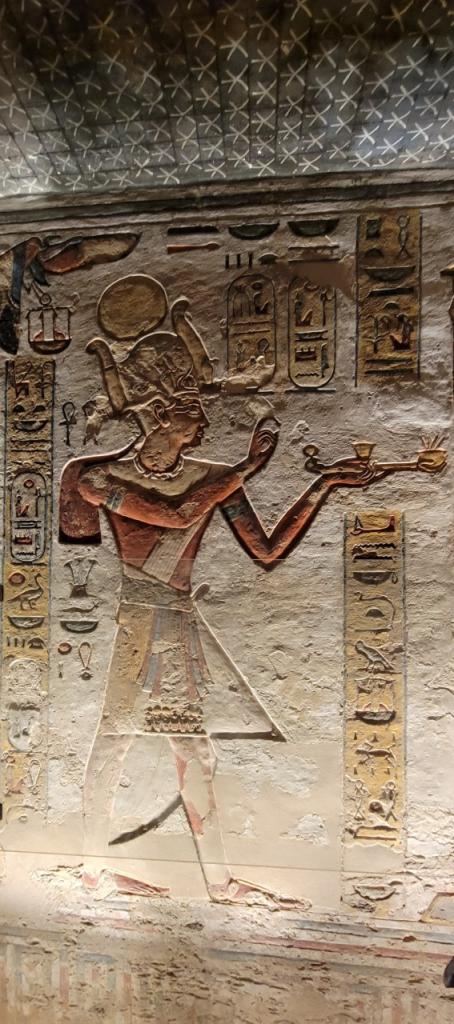
This appears to be Merneptah. But for certain the following painting is of Merneptah.
He is important Biblically speaking because his stele, housed in the museum of Egyptology provides us with the first literary reference to the Hebrews, and hostilities between them and Egypt.
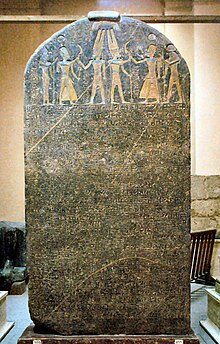
The crucial lines near the bottom make the bold claim, ‘Canaan is plundered, Israel laid waste’. This presumably is revenge taken after Moses and the Hebrews left the land, leaving Pharaoh without all that good Semitic slave labor.


